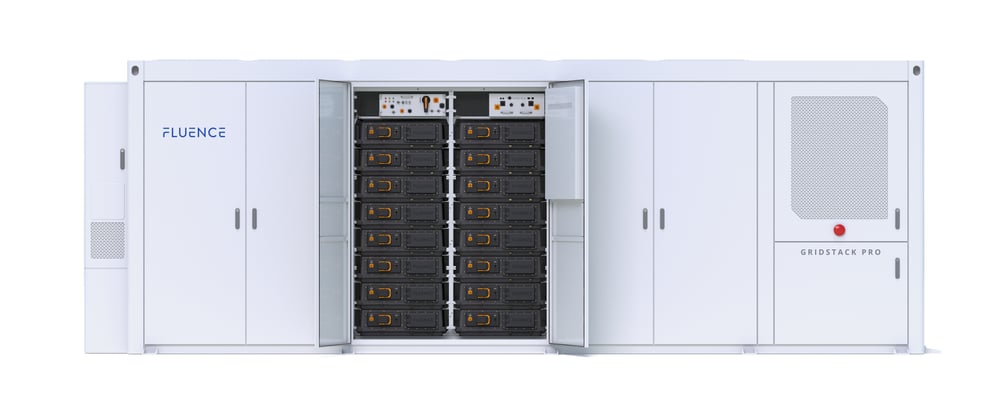The Inflation Reduction Act of 2022 (IRA) is a game changer for accelerating America’s clean energy transition. Bringing certainty around clean energy investments, it promises to supercharge rapid and large-scale clean energy deployments, dramatically reduce greenhouse emissions, and strengthen the country’s energy security.
The IRA brings a lot of wins to the renewable power sector, but the biggest catalysts for energy storage are the introduction of the standalone Investment Tax Credit (ITC) for energy storage and the 10% ITC domestic content bonus. But what is really needed for a storage product to qualify?
Passage of the IRA was only step one. Stakeholders from every corner of the industry must now turn this policy into reality, and much work remains to navigate the IRA’s incentives and capture its full benefits. Of particular importance to our customers and their project pipelines is guidance surrounding the IRA’s domestic content bonus. This bonus gives a hefty uplift to the ITC and will unlock significant investment into deploying much-needed utility-scale energy storage throughout the U.S. Unfortunately, uncertainty still remains around the domestic content bonus and how energy storage products can qualify.
The goal of this post is to reduce confusion on the domestic content guidance so that the industry can move forward in confidence. With so much at stake, chatter surrounding domestic content production and the race among storage providers to claim IRA compliance is moving at full speed. So what does it really take to deliver an IRA-compliant energy storage product? Let’s cut through the noise and examine the advanced work needed to confidently deliver against it.

Clearing the Confusion: What Qualifies for the Domestic Content Bonus?
Although the IRA was passed more than a year ago, varying opinions remain on what actually qualifies for its 10% domestic content bonus. This is due, in part, to the lengthy timeline of the U.S. Department of Treasury and Internal Revenue Service in publishing initial domestic content guidance, which was rolled out in May 2023. While the initial guidance has been published, the wait for Treasury’s final guidance continues, further fueling energy storage industry uncertainty and hesitation.
So, what’s in the initial guidance and how can an energy storage project qualify for the ITC’s domestic content bonus? Let’s take a look:
The initial guidance separates the portions of an energy storage (or clean energy) project into Steel/Iron parts and Manufactured Product parts and specifies different requirements for each:
- The Steel/Iron parts component for energy storage covers rebars used in a system’s concrete foundation and specifies that the rebar must be 100% U.S.-made.
- The Manufactured Product parts of the guidance is the focus of this article and covers the energy storage product components (enclosure/battery pack) and the inverter.
Currently, the Manufactured Product guidance requires that at least 40% of the total costs of all manufactured products and their components in land-based clean energy projects or facilities must be mined, produced, or manufactured in the U.S. if construction starts before 2025 (rising to 55% from 2027 onwards). This is calculated as Domestic Manufactured Products and Components Cost divided by Total Manufactured Product Costs.
Energy storage providers are interpreting this guidance in different ways, leading them to pursue domestic content bonus qualification using a variety of approaches, some of which may be riskier than others. For example, some providers are pushing compliance through U.S.-manufactured enclosures or modules, but not through the battery cells. _F%20symbols%20flipped-1.jpg?width=1000&height=518&name=MicrosoftTeams-image%20(41)_F%20symbols%20flipped-1.jpg)
Fluence Product Production, Utah
Fluence believes the surest way to fully satisfy the Manufactured Product guidance for our energy storage products is to include U.S.-manufactured battery cells as these are the largest single component as a portion of the total project cost, which is the approach we are taking. We are also investigating additional options for introducing other domestically sourced components into our storage products. Doing so will allow Fluence to provide customers with greater than 40% domestic content to satisfy the phased percentage increase through 2027. This approach will also help mitigate risks for our customers in case of a future rule change increasing the domestic content percentage.
Domestic Content Bonus Compliance: Can Your Storage Provider Deliver?
The initial ITC domestic content bonus guidance has been published. Yet, rather than bringing industry confidence, it has only brought more questions. Concerns about continued supply chain constraints, access to capacity, and the ability to capture IRA tax incentives are leaving many developers in a state of limbo, wondering if the technology they select will be able to deliver.
Since the initial guidance was published (and even prior), storage providers have been moving full steam ahead to claim IRA-compliant products. This race to claim compliance is only adding to the industry’s confusion and hesitation. The important truth is that anyone can talk supply chain strategy and IRA compliance, but few providers have done the work needed to deliver against it.
Delivering an IRA-compliant energy storage product starts with security and flexibility of supply. And the work to establish security and flexibility of supply starts well in advance and independent of public policy changes such as the IRA. So, what are the two essential ingredients of building a secure and flexible supply chain? Let’s take a look:
- An Agile Product Architecture: Maintaining a secure/flexible supply chain starts with developing an agile product architecture. Agility in product architecture means, in part, that an energy storage product is designed to incorporate cells from multiple OEM battery manufacturers without compromising on safety and performance. An agile product architecture that can incorporate cells from multiple manufacturers allows the storage provider to swiftly respond to market conditions, such as supply chain constraints or changing public policy.
- A Regionalized Approach: Security and flexibility of supply also requires developing a global supply chain with a regionally focused operational model. With this diversification strategy, providers partner with innovative suppliers and assemble products in proximity to major markets. From Fluence’s perspective, this creates a strong foundation for new product introductions. A regionalized supply chain also brings the agility needed to meet local requirements and adapt to public policy changes.
Since 2021, Fluence has been strategically regionalizing and diversifying our supplier base to effectively manage current and future supply chain constraints. In 2022, we announced the launch of a contract manufacturing facility in North America. Our manufacturing facilities, spare parts hubs, and global network of product testing labs equip Fluence to support energy storage customers with increased speed, expertise, and flexible support throughout the product lifecycle. Also in 2022, we announced a strategic plan to develop the Fluence Battery Pack, which combines state-of-the-art battery modules, cells, battery management systems, and monitoring equipment. The Fluence Pack is designed to incorporate battery cells from various OEM suppliers and will allow greater global supply chain flexibility to best serve customers with rapid energy storage deployment.

Our long-term approach focuses on building the supply chain, products, and partnerships needed to adapt in this quickly changing market. This approach drives benefits to customers as quickly as possible and helps them capture public policy incentives such as those outlined within the IRA.
Gridstack Pro: Positioned to Qualify for the Domestic Content Bonus
Fluence’s proactive and intentional supply chain regionalization and development of the Fluence Pack positioned us well to drive the benefits of the IRA to our customers.
In October, we announced the launch of Gridstack Pro, an advanced energy storage solution built for the next era of utility-scale projects. Gridstack Pro utilizes the Fluence Pack. For the U.S. market, the Fluence Pack will be available with U.S.-manufactured battery cells and modules. This positions Gridstack Pro as one of the first energy storage solutions to qualify for the 10% ITC domestic content bonus under the IRA. Gridstack Pro adds a new offer to the Fluence Product Catalog, meeting emerging customer needs in a fast-growing market. The solution allows Fluence to maximize our scale across the supply chain and best serve customers through the highest degree of battery flexibility, while delivering consistent performance and full system-level safety.
Turning back to the IRA and its historic significance, its initial results are promising. Just a year after it passed, more than $110 billion has already been announced in new clean energy manufacturing investments. Through the launch of Gridstack Pro, Fluence is excited to help our customers capture the benefits of the domestic content bonus. Even more, we will continue doing the work needed to maintain a flexible and secure supply chain to ensure we remain a trusted partner for our customers around the world.
Want to learn more about energy storage solutions that qualify for the 10% ITC domestic content bonus under the IRA?


















